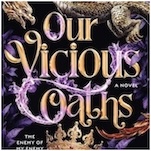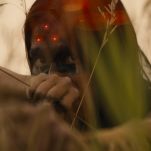HBO Asia’s Folklore Returns the Fairy Tale to Its Horror Roots
Photo: HBO
I’ve been suspicious of myths that aren’t at least a little grim since Disney’s Hercules took away all the things the Greeks loved about their screwed-up Heracles. Though he accidentally murdered folks almost as often as his Animorphed dad seduced women, Heracles was still the greatest of the Greek heroes, and even Disney couldn’t entirely G-rate his legacy: At the the climax of the movie, he pulls his dead girlfriend’s soul out of hell. The macabre makes the story universal. We may not all be super-strong, but we’re all going to die.
Hans Christian Andersen and the Brothers Grimm knew that it’s hard for myths to matter, or maintain their longevity, without some primal elements to ground them. Just read the original version of almost any fairy tale adapted by Disney to find the dead kids, tortured villains, and intense monsters. HBO’s new series, Folklore—recently brought Stateside from HBO Asia—puts these elements at the forefront, digging into various myths as if they were all horror stories.
Created by Singaporean director Eric Khoo, the anthology of hour-and-under movies plucked from the festival circuit has terrifying fables from Japan, Indonesia, Thailand, Malaysia, and South Korea. Approaching it as a unified pan-Asian collection is both problematic, in its erasure of cultural differences, and unproductive, since the grouping of these specific stories speaks to an elemental morbidity that links not only their unique mythologies, but also those world-over. The fairy tale may not quite be universal—arguing that requires way more anthropological work than you can put in just by watching a few scary stories—but navigating how these six bouts with the unreal fit into that classical framework makes the case that the stories that get passed down often, if not always, have their roots in death, fear, and the unknown.
Just as The Lure brought mercreatures back to their murderous roots or Guillermo del Toro refuses to coat his fantasies in sugar, the campfire stories that comprise Folklore approach their morality tales with the same punitive pedagogy as Aesop: Nobody learns unless they suffer. That’s the immediate lesson when things kick off with Indonesian Wewe story “A Mother’s Love,” which depicts a brand of maternal anxiety common in horror around the globe. The single mother uncovers an attic full of children kidnapped by Wewe, the spirit of a woman who took her own life, and things, as you might imagine, only get worse from there. Australia’s The Babadook, Iran’s Under the Shadow, and The Curse of La Llorona have brought unruly spirits into every geographic corner of motherhood just in the last half-decade. “A Mother’s Love” shows Wewe to be a similar figure, working her own scared-straight (or dead) campaign against negligent parenthood, while “Mongdal” makes its single mom way too hands-on. Parenthood is even worse for the main character of “Toyol,” who gets Rumpelstiltskinned in a major way—this time by a shaman he quickly falls for and impregnates.
The anthology’s fear of overbearing women will be familiar to viewers better-versed in the Western fairy tale tradition, which also finds the mythical and dangerous in femininity. (How many evil stepmothers, jealous queens, spiteful goddesses, and ambitious witches can you name? Go!) Yet, lessons must be taught. Even with the weirdo sequences in “Toyol,” in which a bloody, demonic version of the Ally McBeal baby chases people, there’s still a standard moral at its center: Don’t take shortcuts, especially if they’re offered by someone who’s supernatural. The prevalence of babies in this story of deals with various devils won’t be lost on anyone who knows the end of Rumpelstiltskin, or indeed most fairy tales that deal with witches or gods. Sacrifice is a matter of respect. Just ask Abraham.
-

-

-

-

-

-

-

-

-

-

-

-

-

-

-

-

-

-

-

-

-

-

-

-

-

-

-

-

-

-

-

-

-

-

-

-

-

-

-

-








































